Discover the sweet side of Japan with 40 mouth-watering dessert recipes you can make at home. While Japanese cuisine is often associated with savory and umami flavors, it’s also a treasure trove of delightful treats that will satisfy your sweet tooth. From traditional desserts to modern twists, this collection has something for every skill level and taste preference. Be prepared to venture into uncharted territory as you explore new ingredients and flavor combinations.
If you’re already a fan of matcha or red bean paste, get ready to fall head over heels in love with these recipes. With easy-to-make treats like Banana Sushi and Kohi Zeri alongside more complex creations, there’s something for everyone. This diverse selection includes sweet surprises and classic favorites, ensuring that you’ll find the perfect dessert to impress your friends or indulge in solo.
As a bonus, we’ve included converter tools to help you adapt recipes from Japanese measurements to American/Imperial standards. So, sit back, relax, and indulge in the sweet delights of Japan – meshiagare! (bon appétit!)
Anmitsu

Japanese desserts take center stage as we kick off our list with a traditional treat that may remind you of a parfait, but with a unique twist. Anmitsu is a sweet and refreshing dessert that combines the richness of sweetened red bean paste, known as Anko, with a mix of jelly, fresh fruits, and other ingredients to create a delightful culinary experience.
If you’re looking for inspiration to try your hand at making Japanese desserts from scratch, this classic treat provides an excellent starting point.
Banana Sushi
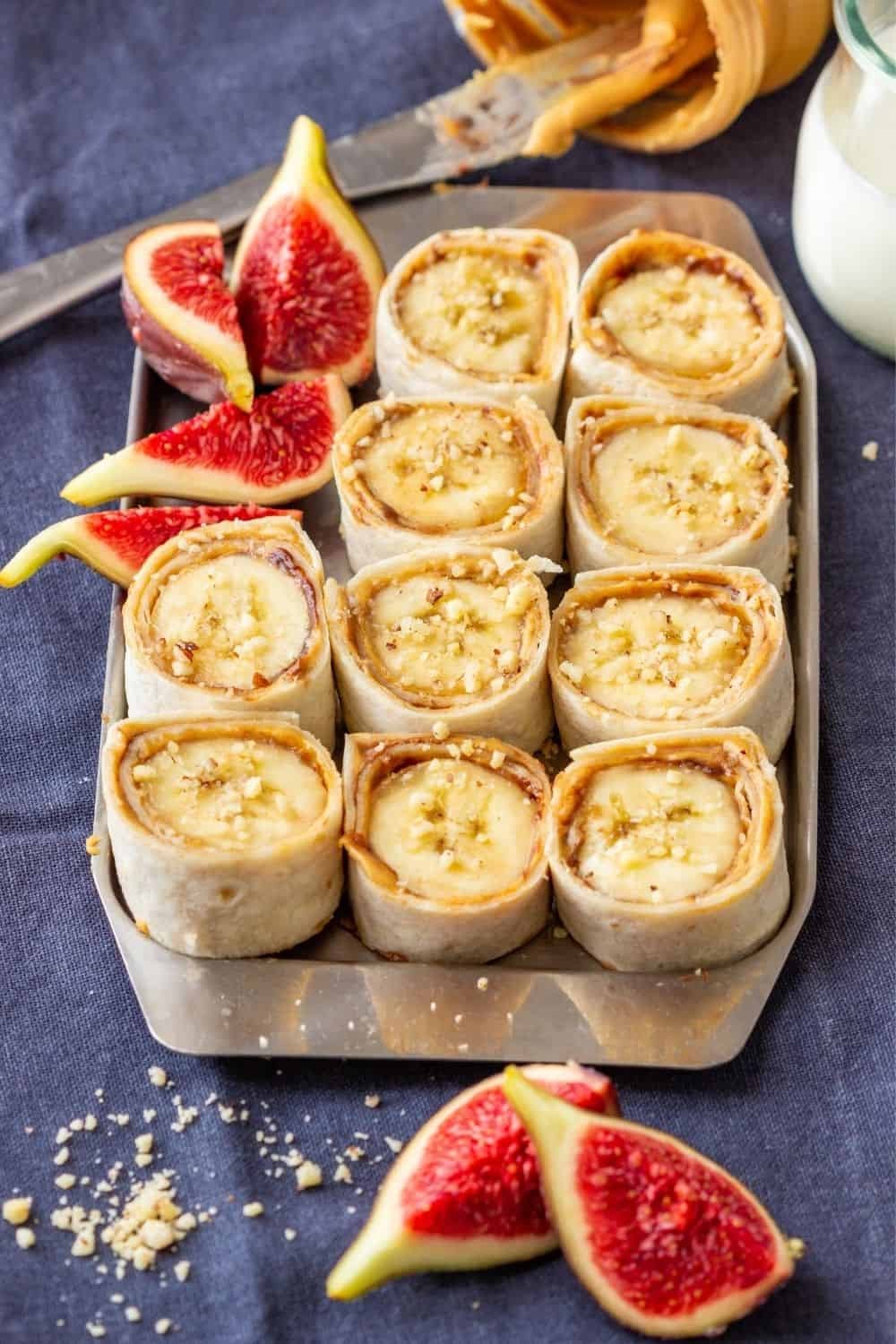
Sushi’s sweet surprise: who says dessert can’t be a roll with the punches? The unconventional combination of banana, pistachio, and chocolate may require just a few straightforward ingredients, but the outcome is an unbeatable harmony of sweetness and crunch. This innovative treat may not follow traditional Japanese dessert paths, yet it’s undeniably one of the easiest and most tantalizing sweet treats to try.
Japanese Cheesecake
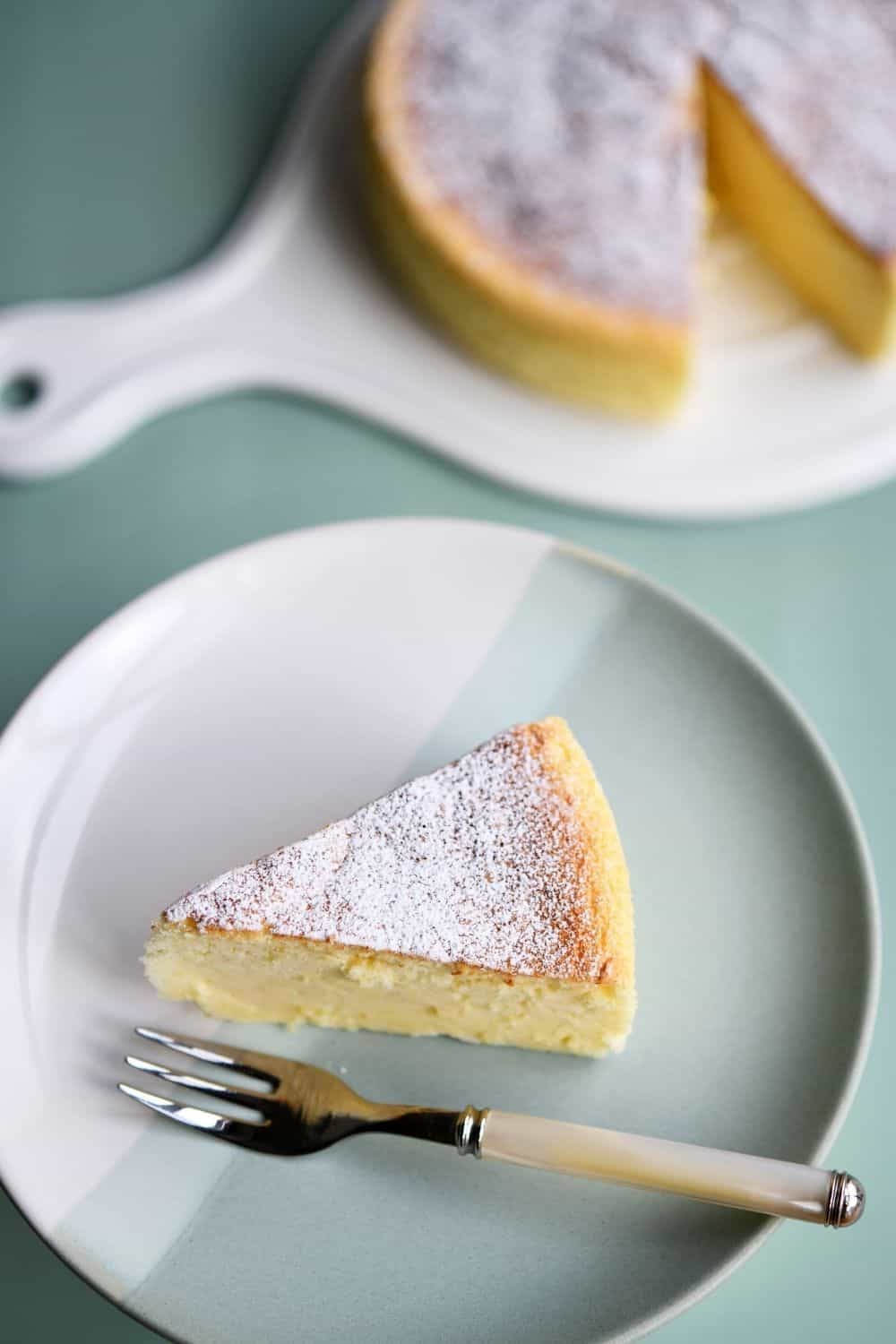
In contrast to its American counterpart, Japanese Cheesecake, also known as Cotton Cheesecake, offers a lighter dessert experience. Unlike traditional cheesecakes, this version places greater emphasis on airy texture, similar to that of sponge or Angel food cake, resulting in a fluffier and more delicate treat.
Daifuku (Mochi Balls)
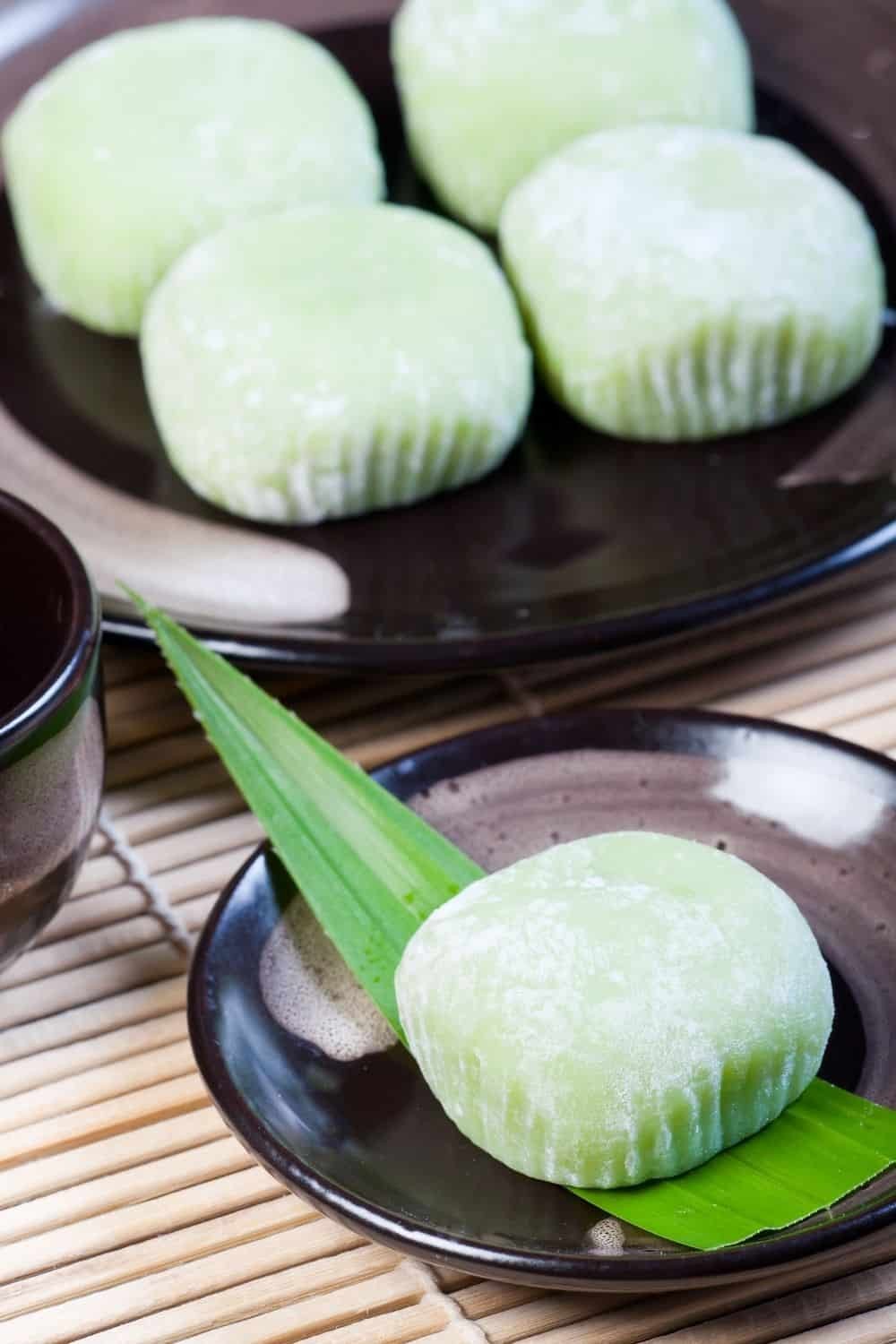
The renowned Mochi, a staple of Japanese cuisine, has captured the hearts and taste buds of people globally. Its distinctive chewiness, small size, and sweet stickiness make it an intriguing treat to try. While mastering the art of making Mochi can be a bit of a challenge, especially for beginners, the reward lies in its one-of-a-kind flavor profile that’s well worth the effort.
Mochi Ice Cream
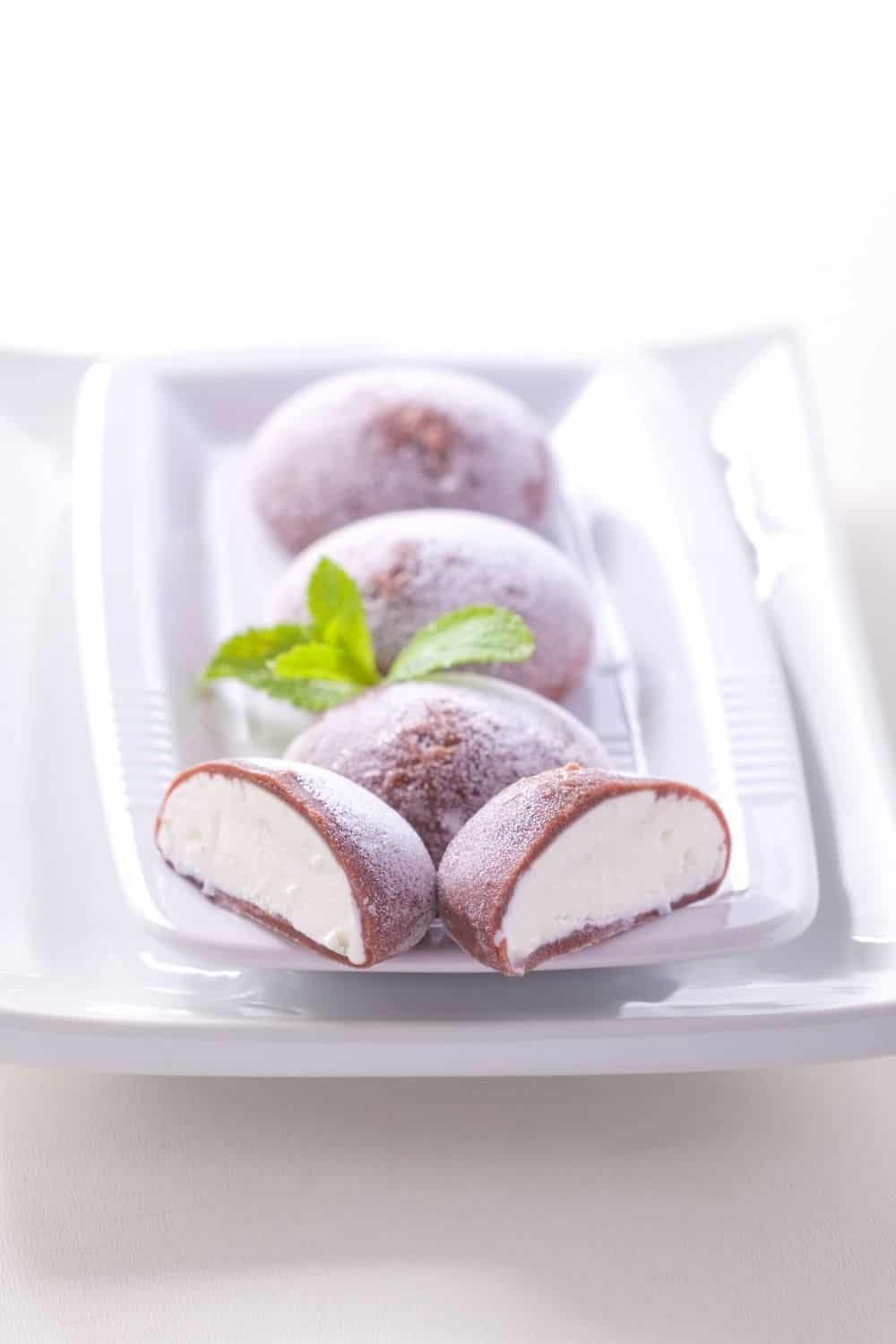
Indulge in the unique fusion of Mochi Ice Cream by wrapping a scoop of your favorite ice cream within a sweet rice dough. The result is a soft, chewy, and light treat that offers a refreshing twist on traditional mochi. Once you’ve honed your mochi-making skills, incorporating ice cream becomes a straightforward process.
Raindrop Cake
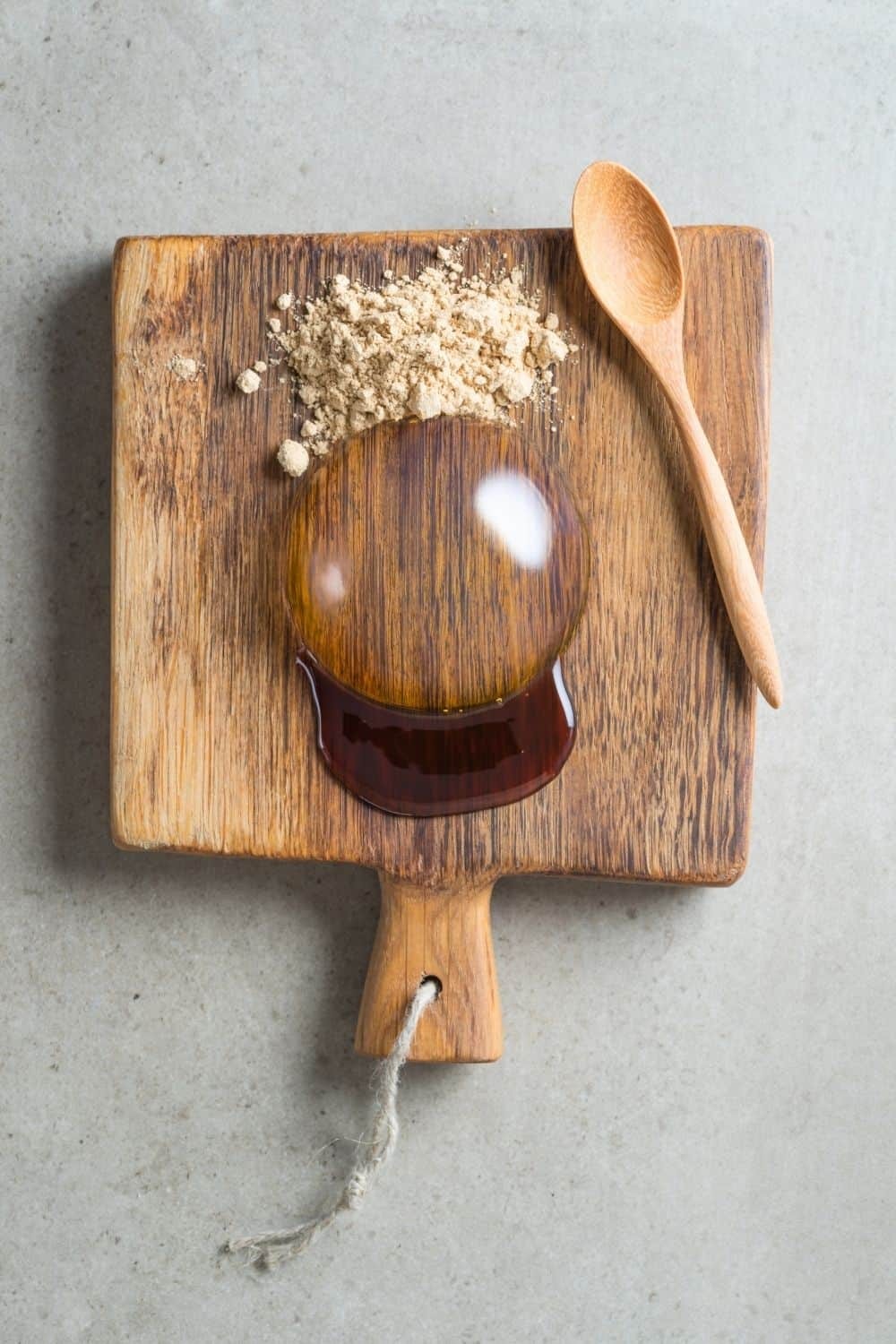
The translucent gelatin alternative has an uncanny resemblance to a raindrop – a fitting name for this delicate treat. While its fundamental ingredients are devoid of color and flavor, the added toppings elevate the taste experience. A classic combination of Kuromitsu (brown sugar syrup) and Kinako powder (roasted soybean powder) serves as the perfect accompaniment to this melt-in-your-mouth dessert.
Inspired by traditional Japanese mochi, this airy and slightly nutty delight is characterized by a subtle sweetness.
Furutsu Sando (Fruit Sandwich)
While traditional Western-style sandwiches often lean towards savory flavors, Japan’s Furutsu Sando has taken a unique approach by incorporating fresh fruits and cream into their creations. This departure from the norm opens up exciting possibilities for those looking to mix things up at their next picnic. Why not consider adding some sweet sandwiches to your repertoire, offering a refreshing change of pace for both you and your guests?
Japanese Parfait
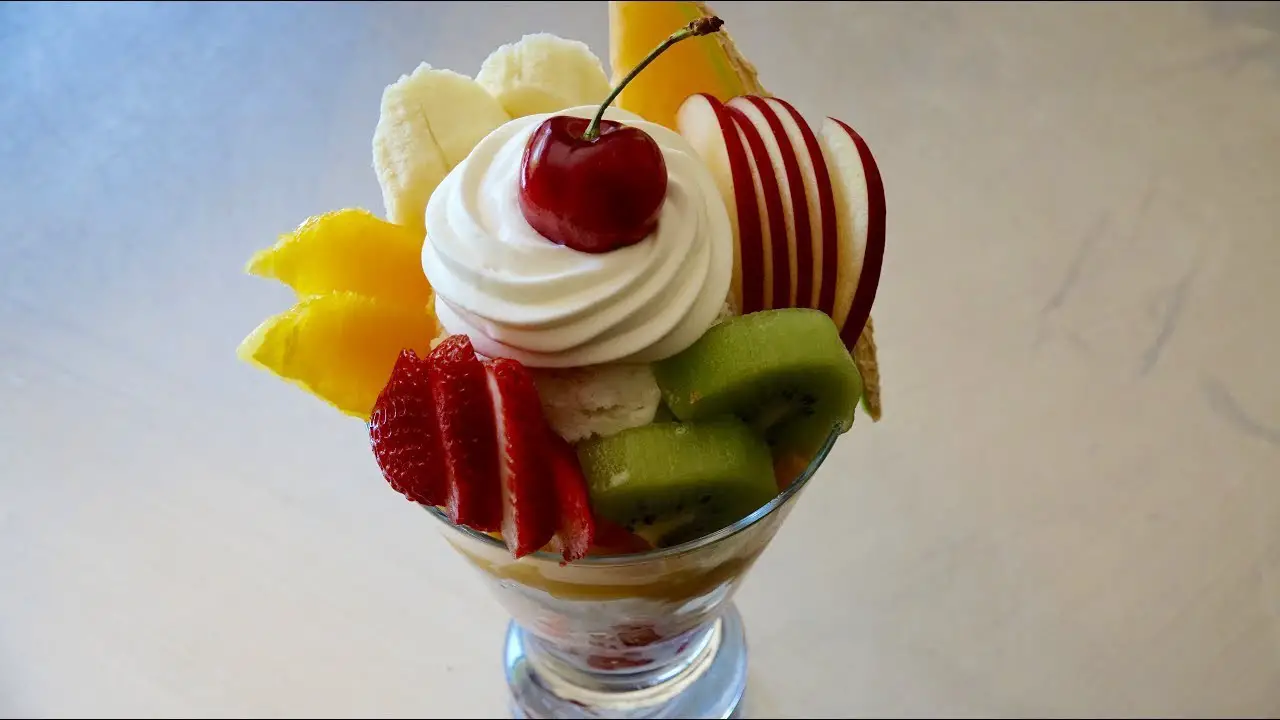
The French may have pioneered the parfait concept, but it’s the Japanese who have taken this sweet treat to new heights. In fact, the fruit parfait has become a staple in many Asian countries, with matcha parfait being a particularly popular variation. The green tea flavor is a perfect reflection of Japan’s love for all things matcha.
Mitsumame
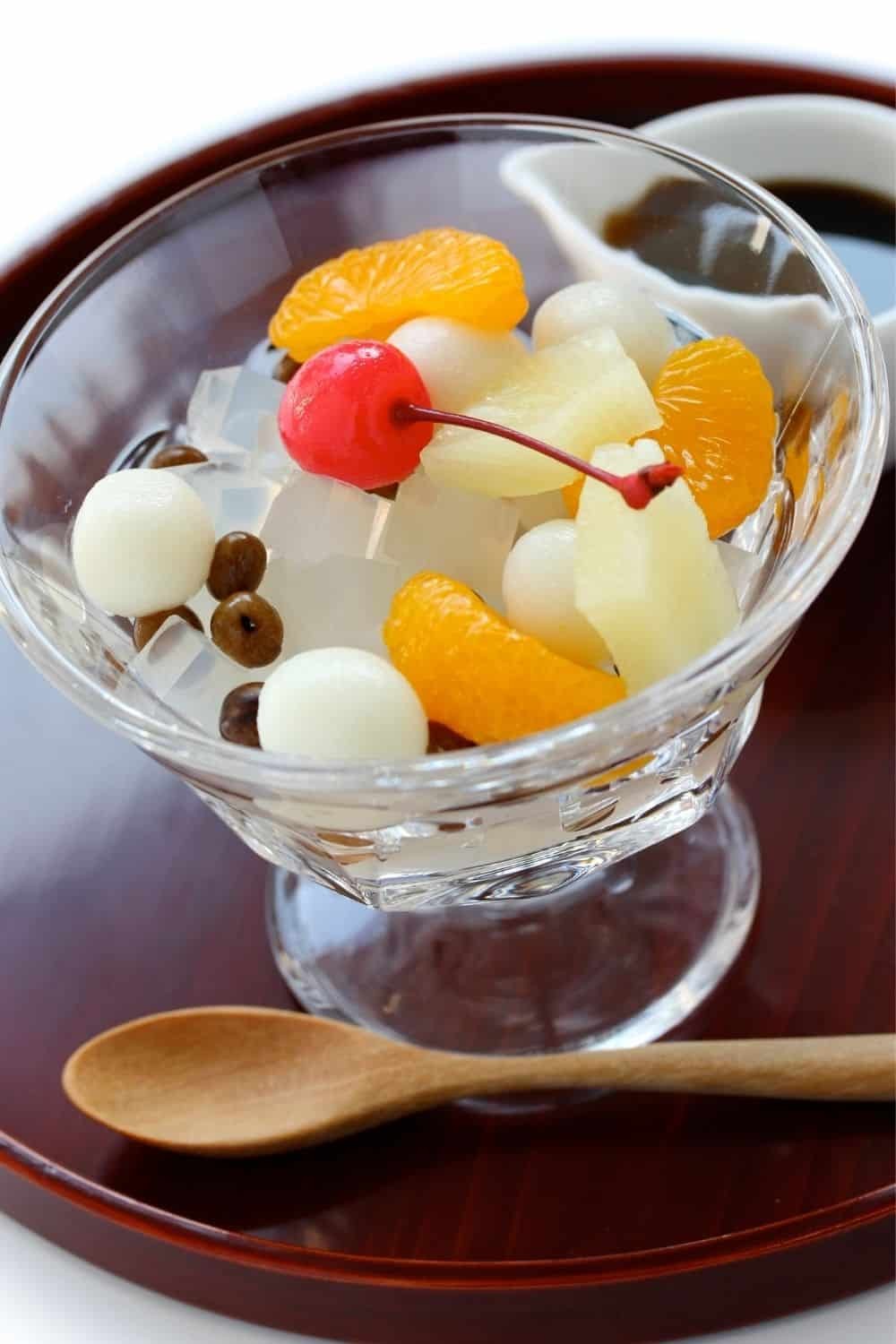
Indulge in the delightful fusion of flavors and textures that Mitsumame has to offer! The combination of black sugar syrup, vibrant fruit, gelatinous cubes, and other seasonal add-ins creates a refreshing and sweet treat perfect for warm weather. To elevate your Mitsumame experience, take a cue from traditional Japanese cuisine and carefully cut the agar-agar jelly into small, ice cube-like pieces, adding a touch of authenticity to this revitalizing dessert.
Kohi Zeri (Coffee Jelly)

While coffee is often associated with morning routines, its history also includes evening treats. One such instance is the traditional Japanese dessert, Kohi Zeri or Coffee Jelly. This refreshing summer treat has been around since the 1900s and is perfect for a hot day’s cool-down. To enjoy it, simply add milk, whipped cream, or ice cream to bring out the sweeter notes of the coffee flavor.
Taiyaki
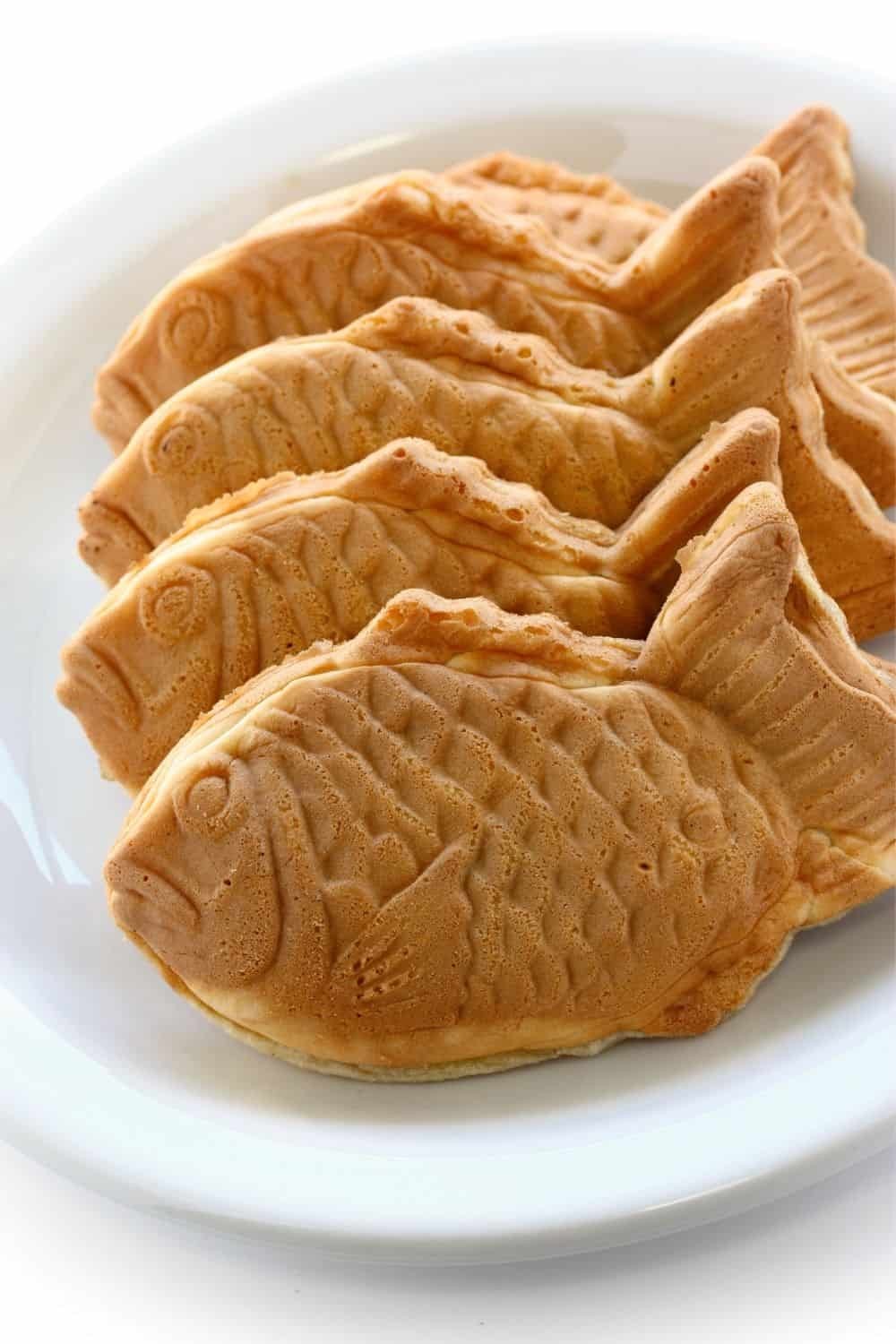
In Japan, a traditional sweet treat has been delighting taste buds for generations: the Anko-filled red snapper fish pastry. This iconic dessert is a staple at Japanese festivals and a popular street food, offering a unique combination of flavors and cultural significance. What’s more, the distinctive shape of the pastry is said to bring good luck, making it an even more special treat.
Purin (Japanese Caramel Custard Pudding)
Purin, alternatively known as Japanese custard pudding, boasts a rich and creamy texture reminiscent of its flan counterpart. The velvety custard is indulgently sweet, leaving a tantalizing aftertaste that’s sure to tickle your taste buds. A bittersweet caramel glaze adds a delightful contrast to the sweetness, further elevating the overall flavor profile.
Green Tea Ice Cream

Delving into the world of Japanese desserts is a journey that inevitably involves surrendering to the allure of matcha. A prime example of this sweet obsession is Green Tea Ice Cream, a treat that’s as easy to make as it is to savor. For those familiar with the process of making ice cream at home, this recipe presents little challenge.
The result, however, is well worth the minimal effort: a refreshing dessert that balances smoky and bitter notes with just the right amount of sweetness, making it the perfect way to cap off a meal.
Matcha Tiramisu
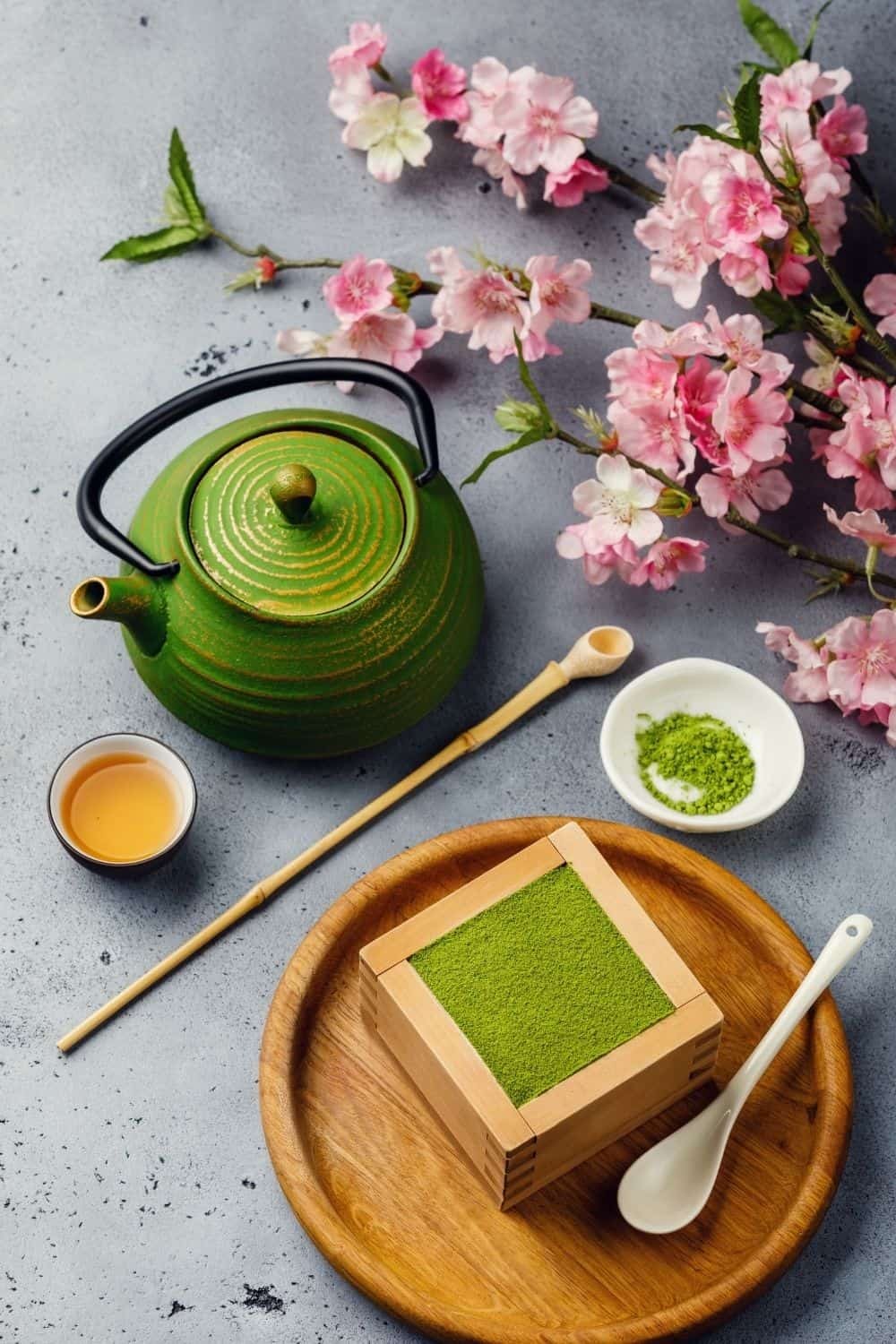
Combining Italy’s creamy tiramisu with Japan’s bold matcha creates a dessert that seamlessly blends the best of both worlds. This harmonious fusion yields a sweet and savory treat that expertly balances flavors without being overly sweet, bitter, or unfulfilling. For an added twist, fans of Japanese pudding might consider substituting heavy cream with custard to create a unique and intriguing dessert experience.
Green Tea Cookies
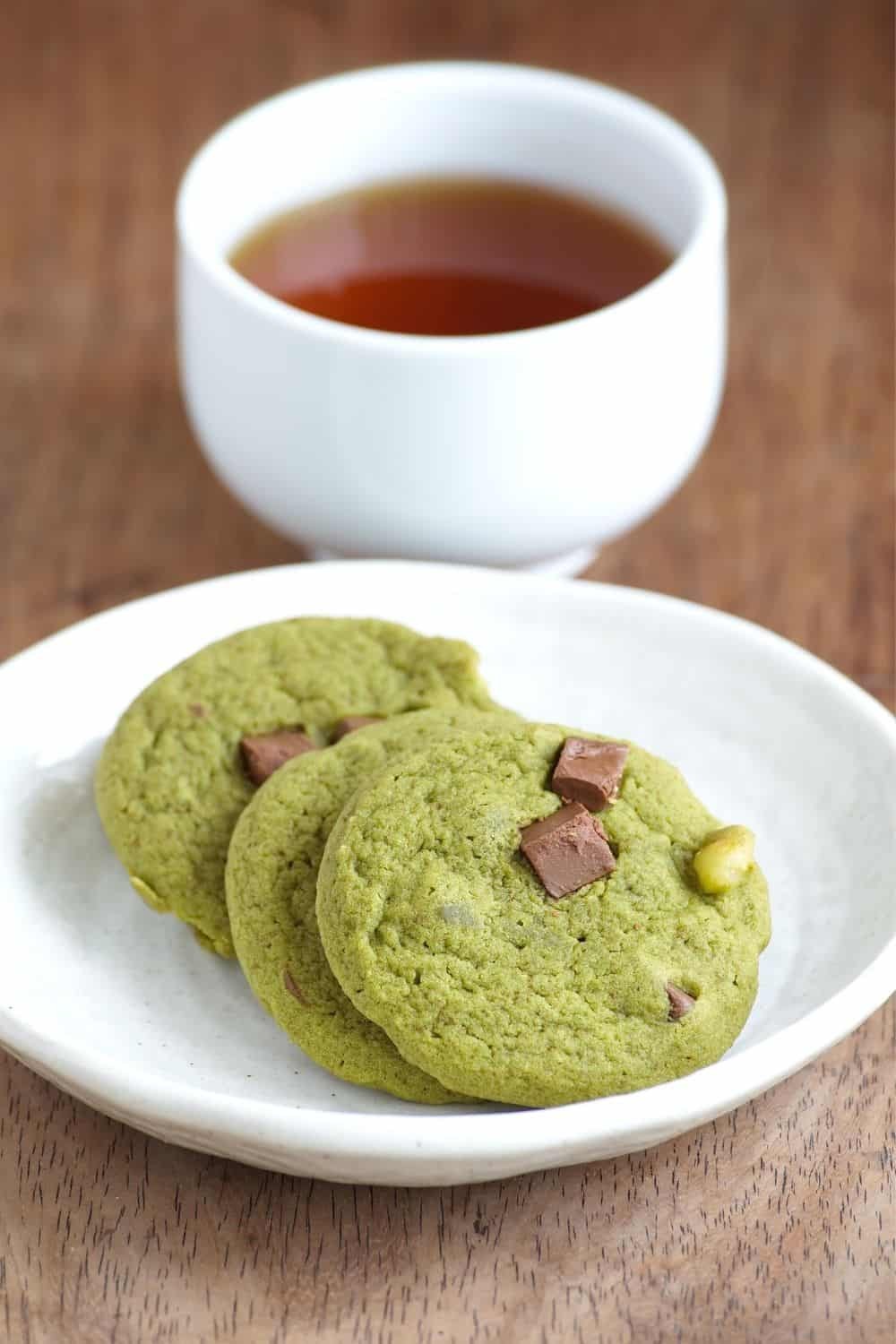
Indulge in the harmonious union of green tea and sweetness by adding a delightful texture to your Japanese-inspired treat plate with Green Tea Cookies. The distinctive bitterness of matcha is perfectly balanced by the sugary notes of white chocolate chips, creating a satisfying flavor profile that will leave you craving more.
Manju (Japanese Red Bean Cakes)

In the world of Japanese cuisine, sweet red bean paste is another essential ingredient that deserves recognition. While not as well-known globally as some other Japanese desserts, Mochi cakes are a must-try for anyone looking to explore the country’s sweets scene. These soft, round treats have earned their place among Japan’s beloved desserts, and for good reason. When served with a warm cup of green tea, the traditional way to enjoy Manju, the experience is elevated to new heights.
Dorayaki
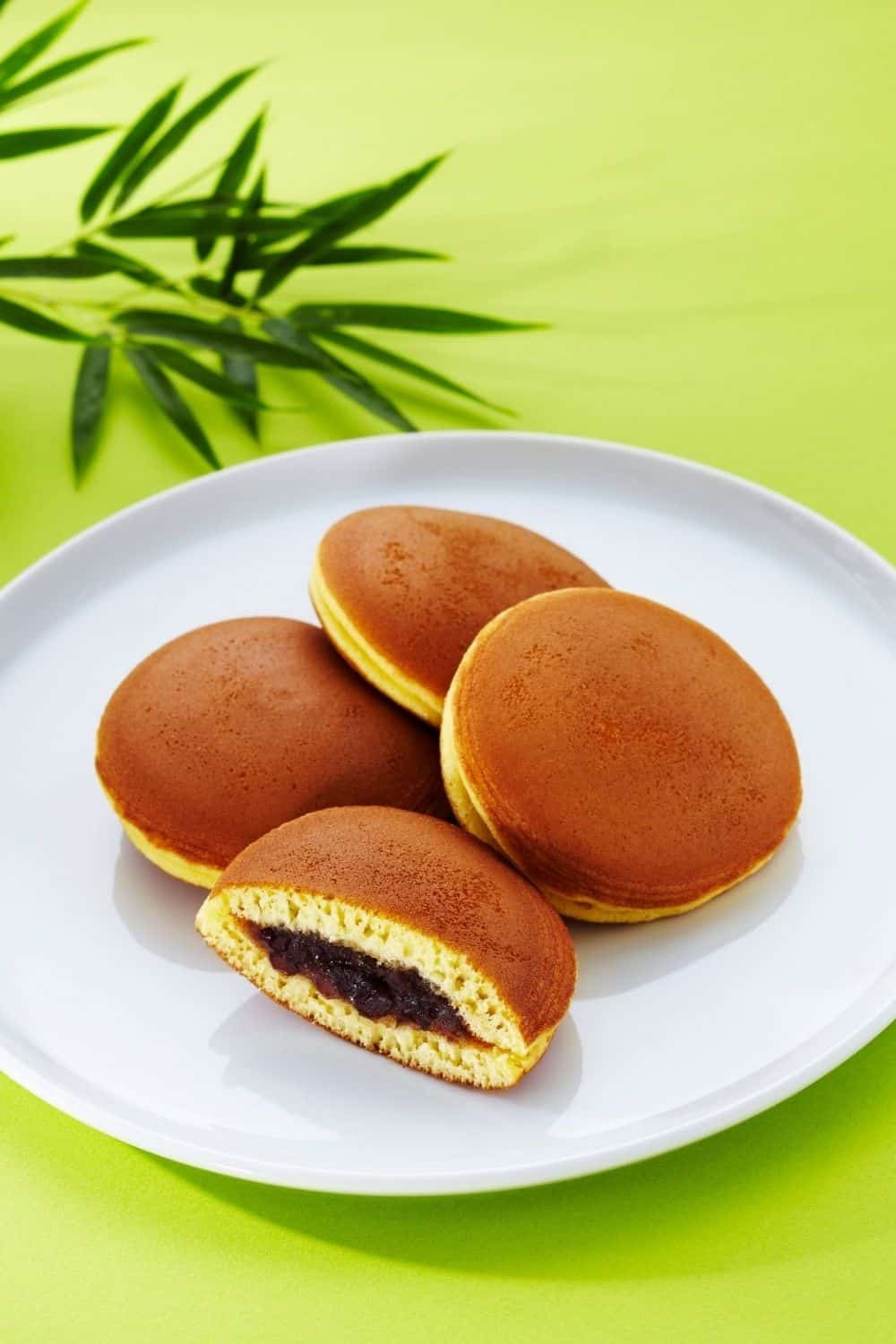
Red bean paste enthusiasts rejoice! While cakes are delightful, Dorayaki offers a unique experience – a pancake sandwich overflowing with anko. This traditional Japanese dessert has transcended its origins to gain widespread popularity, largely due to its starring role in the beloved cartoon series Doraemon. For those looking to mix things up, consider infusing your pancakes with matcha flavors to satisfy any cravings.
Souffle Pancakes
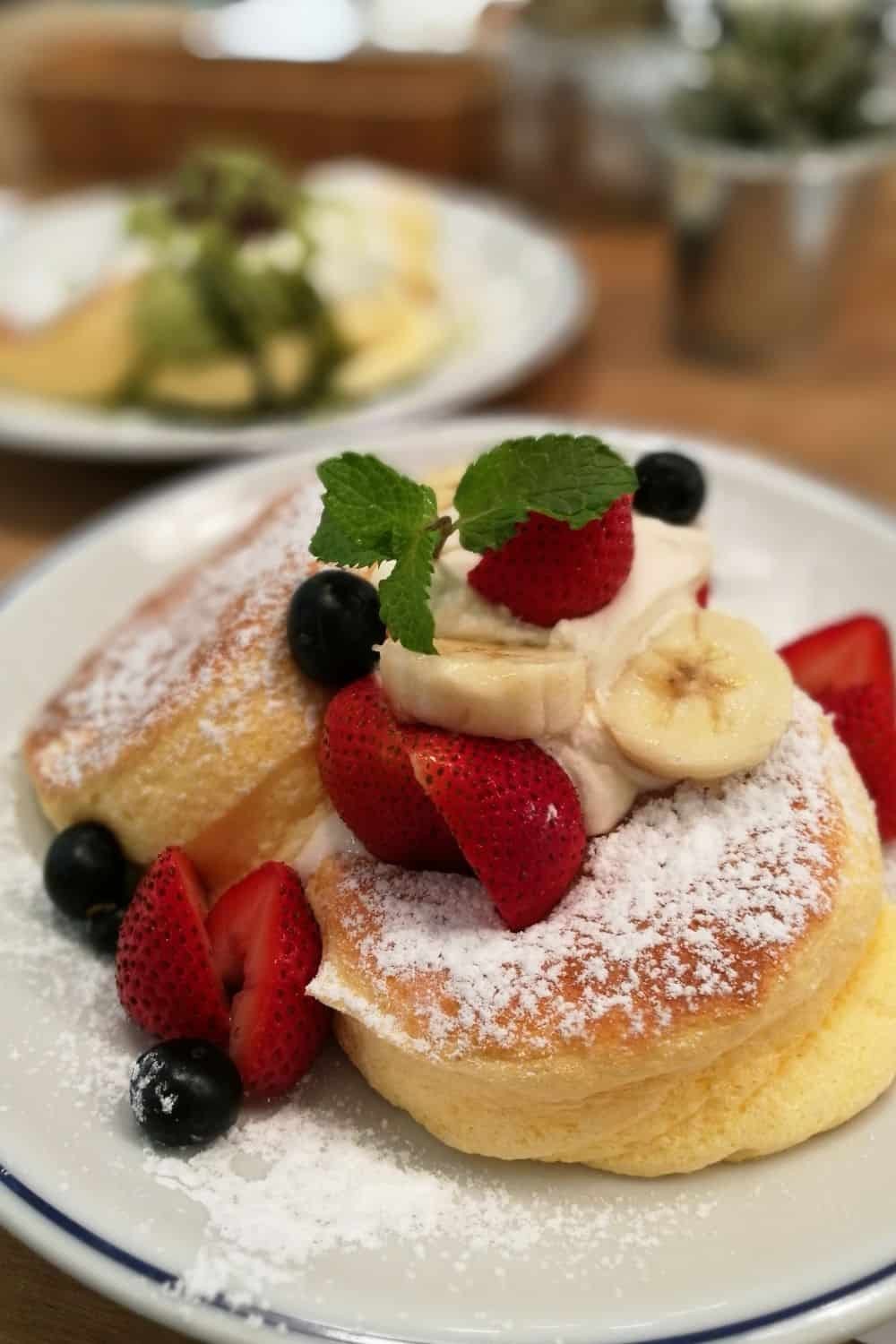
Soufflé pancakes have gained popularity in recent years as a beloved Japanese dessert, yet they’ve been around for centuries. One of the greatest perks of this effortless recipe is its adaptability – tailor your toppings to suit your taste buds! From fresh fruits and syrup to nutty spreads or simply enjoying it plain, these fluffy treats make for an excellent breakfast option (or satisfying snack whenever you crave something sweet).
Daigaku Imo (Candied Sweet Potatoes)
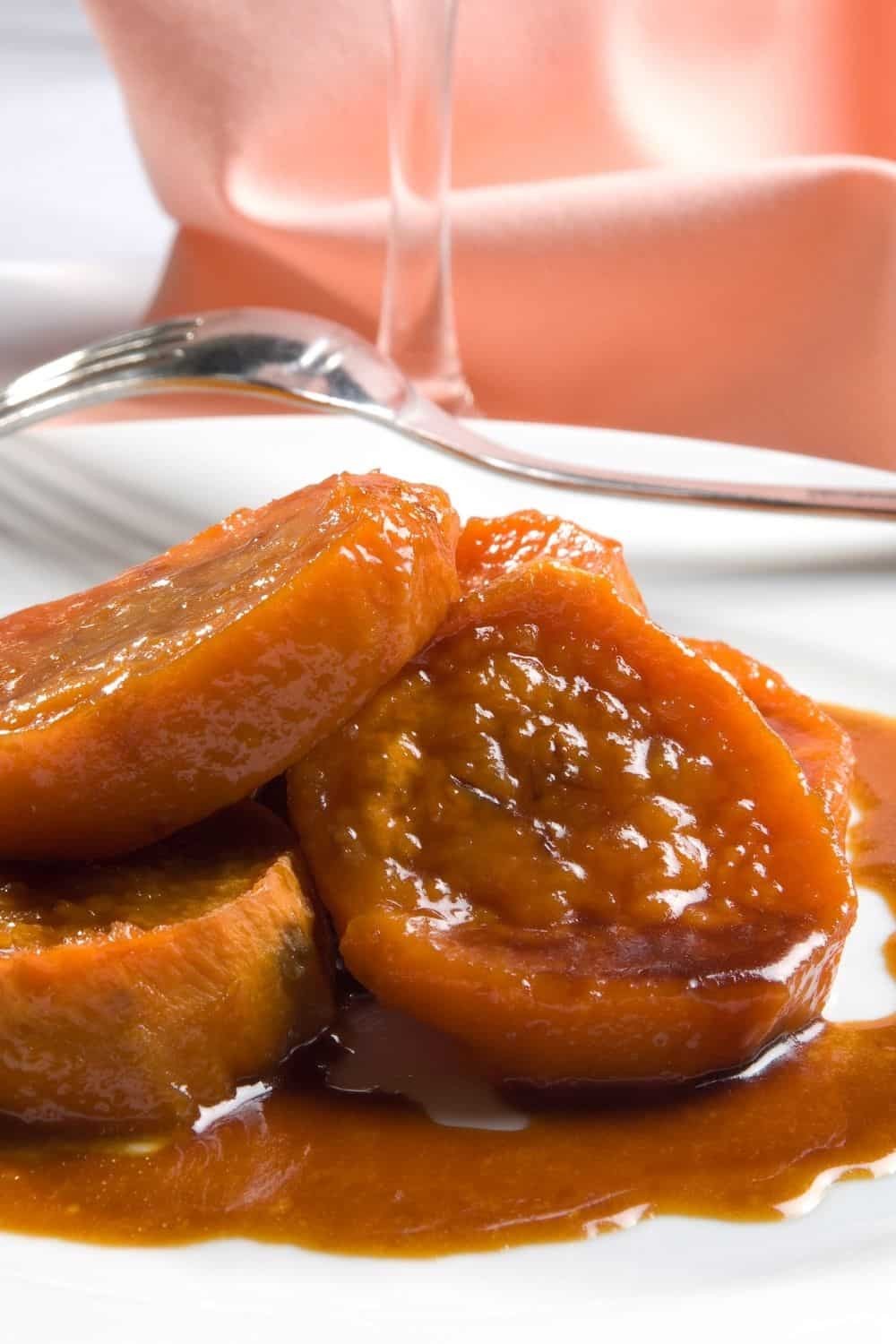
Enveloped in a rich, caramelized crust, Daigaku Imo presents a fascinating contrast of textures – crunchy on the outside and yielding to each bite – while its harmonious balance of savory and sweet flavors tantalizes the palate. Interestingly, this popular dessert’s name has a historical basis, stemming from its humble origins as an affordable treat for university students with a sweet tooth.
Sesame Cookies

Black sesame is another ubiquitous ingredient that appears frequently in traditional recipes. One way to incorporate this nutty flavor into your baking is by making sesame cookies, which offer a nice departure from the typical sweet treats. While these cookies are already a great option for those with less of a sweet tooth, you can also take it up a notch by adding a drizzle of icing for a touch of sweetness.
Shibuya Honey Toast
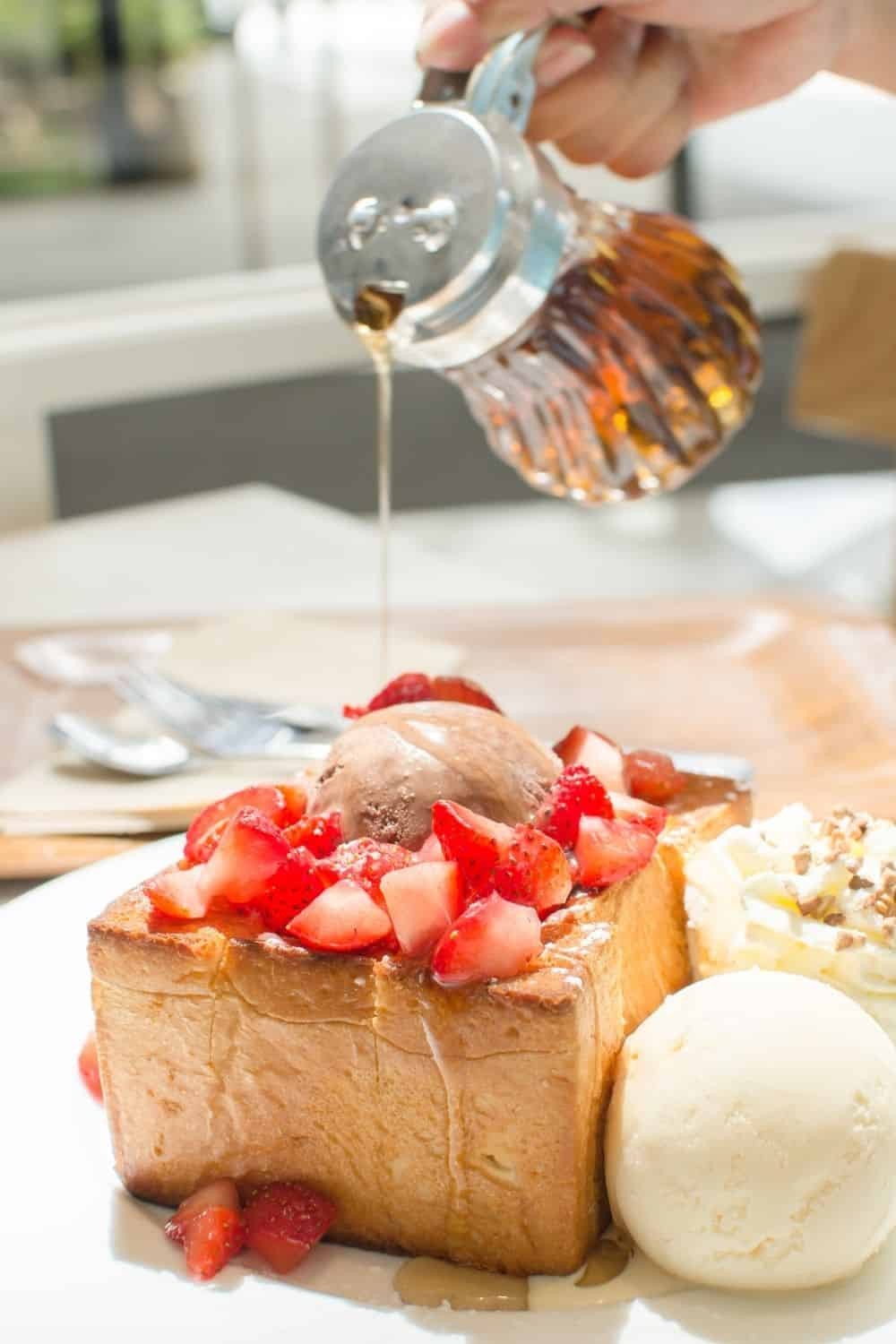
Inspired by its heritage, Shibuya Honey Toast crafts a rich dessert experience using Japan’s signature shokupan bread, also known as Japanese milk bread. The star of the show is the sweet, fluffy bread, which serves as the base for an array of indulgent toppings. From drizzling chocolate shavings to adding a satisfying crunch with Pocky sticks, or even garnishing with colorful sliced fruit, the possibilities are endless and limited only by your creativity.
Best of all, this sweet treat is surprisingly easy to prepare, resulting in a filling and delightful experience that’s sure to satisfy any sweet tooth.
Homemade Pocky
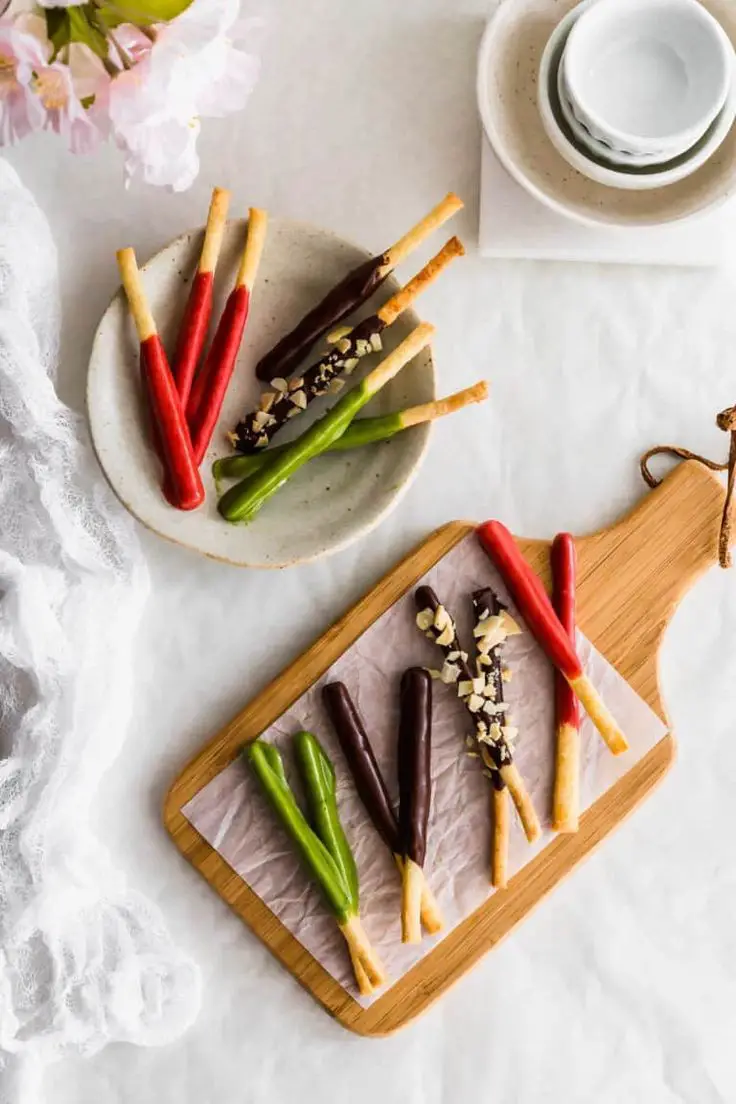
The beloved snack brand Pocky has inspired many to attempt making their own homemade version of this tasty treat. The original consists of a crunchy biscuit stick coated in either chocolate or strawberry, but the fun doesn’t stop there. Just as you can customize a dipped soft pretzel with toppings like nuts and crunched candy, you can also add your favorite seasonings such as salt to give it an extra boost of flavor.
Mizu Yokan
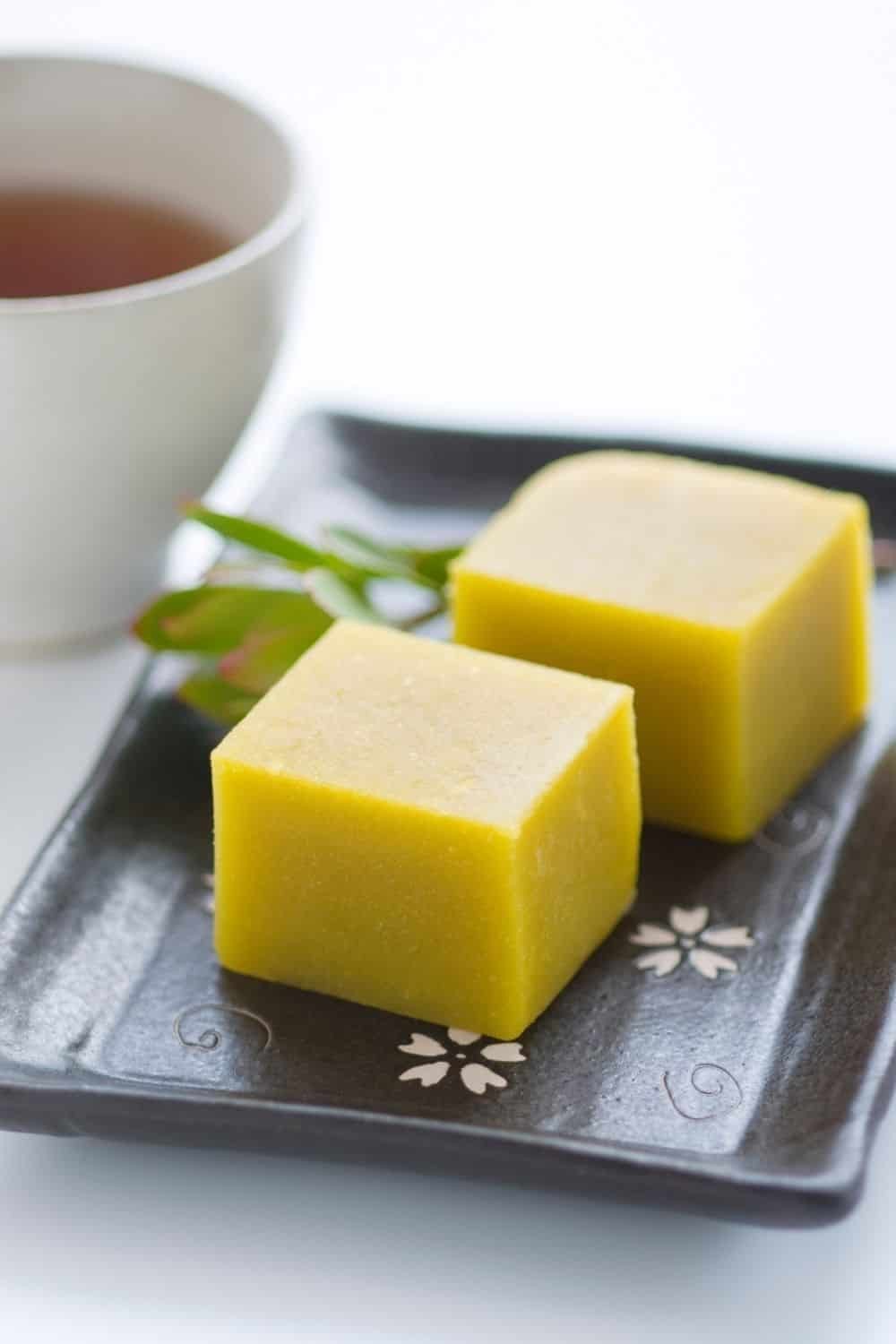
Mizu Yokan, a traditional Japanese dessert, presents a unique culinary experience with its delicate balance of red bean paste and subtle sweetness. The jelly-like treat boasts an impressive water content, rendering it remarkably refreshing. While often compared to jello, Mizu Yokan distinguishes itself through a less sweet flavor profile, making it a delightful alternative for those seeking a milder dessert option.
Miso Butter Cookies

While miso or fermented soybeans may not be the first ingredients that come to mind when it comes to Japanese sweets, they pair surprisingly well with a rich, buttery dough. For those who enjoy the combination of salty and sweet flavors with a melty, buttery twist, Miso Butter Cookies are a must-try. And for peanut butter enthusiasts, there’s even more good news – the option to add miso to peanut butter cookies is also available, offering an added layer of complexity and depth in each bite.
Japanese Christmas Cake

As the holiday season approaches, Japanese Strawberry Sponge Cake makes its annual comeback around Christmas Eve. This festive treat is typically adorned with festive or Santa-inspired decorations, and its generous topping of frosting, whipped cream, and fresh strawberries only adds to its allure. In fact, we’ve experimented with various presentation styles, from flat layers to carefully crafted balls. Why not take it to the next level by rolling your own cake?
The combination of rich heavy cream and delicate, fluffy sponge cake is a match made in heaven when paired with an assortment of fresh fruits. For a twist, you can also substitute the fruit with sweet jelly or jam for a different flavor profile. As a result, this cake makes a wonderful addition to any seasonal spread. If you’re looking for more inspiration, be sure to check out our list of Japanese Christmas Cakes here.
Matcha Mille Crepe Cake

Blending the elegance of French patisserie with the distinctiveness of Japanese green tea, the Matcha Mille Crepe Cake is a beloved dessert. Its intricate structure comprises delicate layers of crepe infused with the subtle flavor of matcha or green tea, carefully sandwiched between generous helpings of whipped cream.
The visual appeal of this cake is just as impressive as its taste, with the vibrant green hue and light, airy texture working harmoniously together to delight both the eyes and palate.
Kabocha Squash Pie
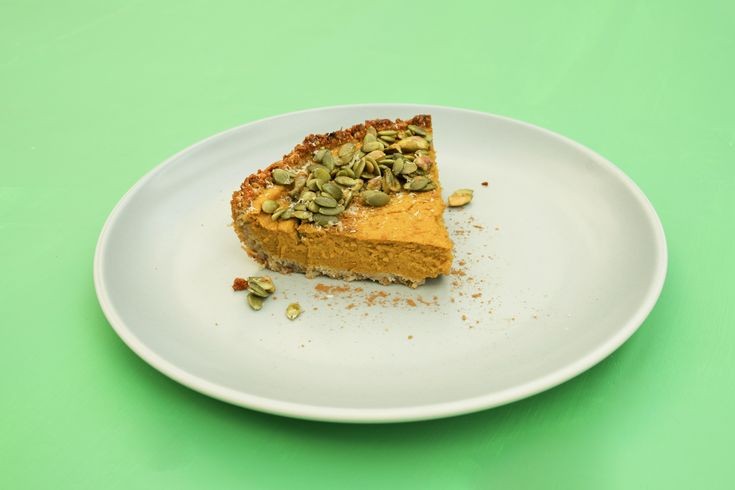
Winter squash enthusiasts, meet Kabocha – a type of Japanese pumpkin that brings a unique twist to traditional autumnal dishes. Imagine a Kabocha Squash Pie, infusing your autumn feast with an Eastern flair. The flavor profile is where Kabocha truly shines, offering a harmonious blend of sweet potato and western pumpkin notes, reminiscent of roasted chestnuts.
This delightful gourd makes for an excellent choice when catering to dinner guests with a mild sweet tooth, ensuring everyone leaves the table satisfied.
Steamed Cake (Mushi-Pan)
Steamed cakes, often mistaken for muffins due to their visual similarity, stand out from the crowd with their distinct cooking method. The absence of oven baking in traditional Japanese desserts has led to the development of innovative confectionery techniques like the mushi-pan, resulting in a lighter and less sweet treat. This unique approach also allows for endless flavor possibilities, making it easy to create personalized treats.
Time-honored favorites include green tea, sweet potato, chocolate, corn, or cheese, offering something for every taste bud.
Chocolate Gateau (Japanese Sponge Cake)
While the origins of the decadent Chocolate Gateau may lie in France, its design is reminiscent of traditional Japanese sweets, characterized by lightness and layering. This indulgent treat is sure to delight chocolate enthusiasts with a sweet tooth, making it an absolute must-have for any baking repertoire.
Nama Chocolate

For those who love indulging in rich flavors, Nama Chocolate is a perfect choice for Valentine’s Day gifts. This popular brand, known for its high-quality chocolate, offers the flexibility to add personal touches and unique flavor combinations. And let’s not forget about matcha – it’s the ultimate versatile ingredient! With Nama Chocolate, you can create decadent ganache treats that are sure to impress your loved ones or satisfy your own sweet tooth.
Whether you’re celebrating Valentine’s Day with a romantic partner or simply treating yourself, this beloved tradition is all about embracing indulgence and sharing joy with others.
Hanami Dango
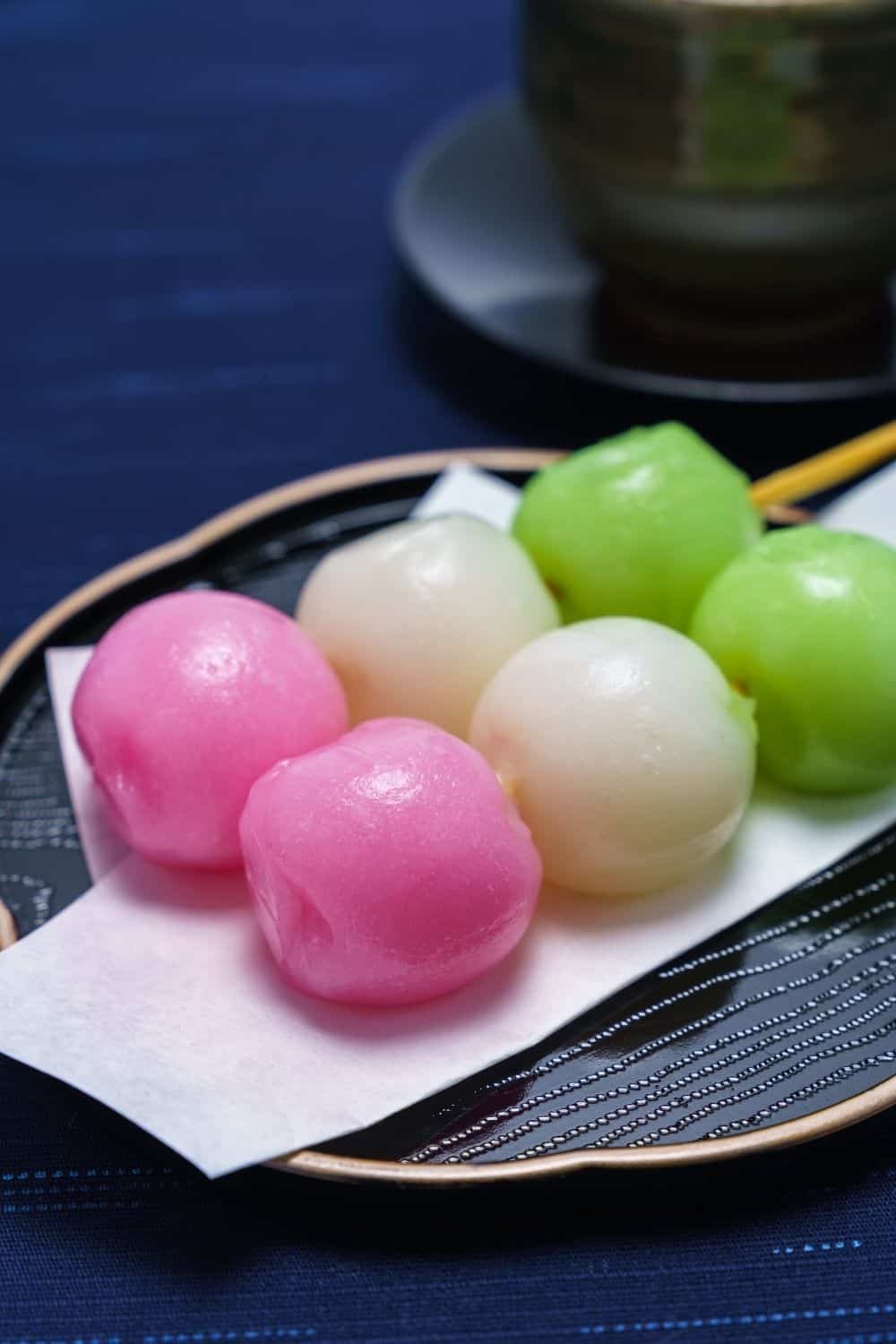
Dango, a traditional Japanese sweet rice dumpling, typically served on skewers in sets of three, offers a delightful variety of flavors. Among these, Hanami Dango stands out as a particularly charming representation of the changing seasons. The pink hue signifies the fleeting beauty of cherry blossoms, while white symbolizes the serenity of winter snow and green represents the promise of spring or summer.
This sweet treat is perfectly paired with traditional flower viewing for a memorable springtime indulgence.
Ikinari Dango
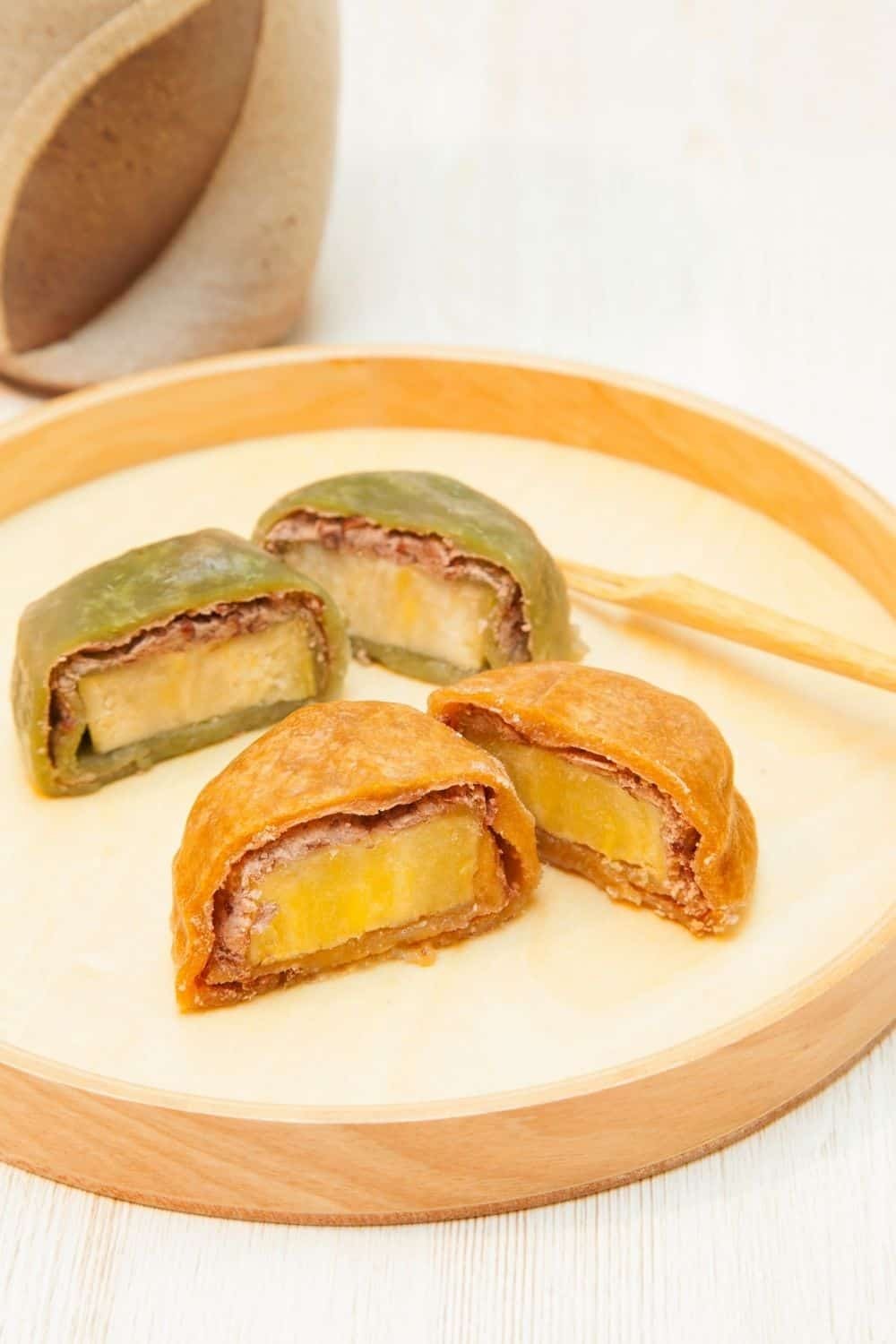
If you’re familiar with the delightful chewiness of dango, then you’ll love this variation that adds a sweet and nutty twist. Sweet potato and red bean paste bring an extra layer of flavor to this traditional treat, which originates from the Kumamoto Prefecture in Kyushu. What sets Ikinari Dango apart is its best-when-warm serving temperature, offering a cozy and comforting experience.
Nerikiri

Nerikiri, a variation of Wagashi and traditional Japanese dessert, combines white bean paste with mochi to create a visually stunning treat. What makes Nerikiri truly special is its distinctive color palette and artistic presentation. The shape of the Nerikiri can vary greatly, ranging from vibrant rainbow-hued spheres to intricate sculptures that are almost too beautiful to eat.
This unique aesthetic quality allows Nerikiri to transcend its role as a mere dessert, becoming an integral part of Japanese cultural experiences. In many cases, the shape is designed to reflect the current season, adding an extra layer of symbolism and connection to nature. Furthermore, Nerikiri is often served at traditional tea ceremonies, where it serves as a beautiful and meaningful complement to the serene atmosphere.
Ichigo Daifuku
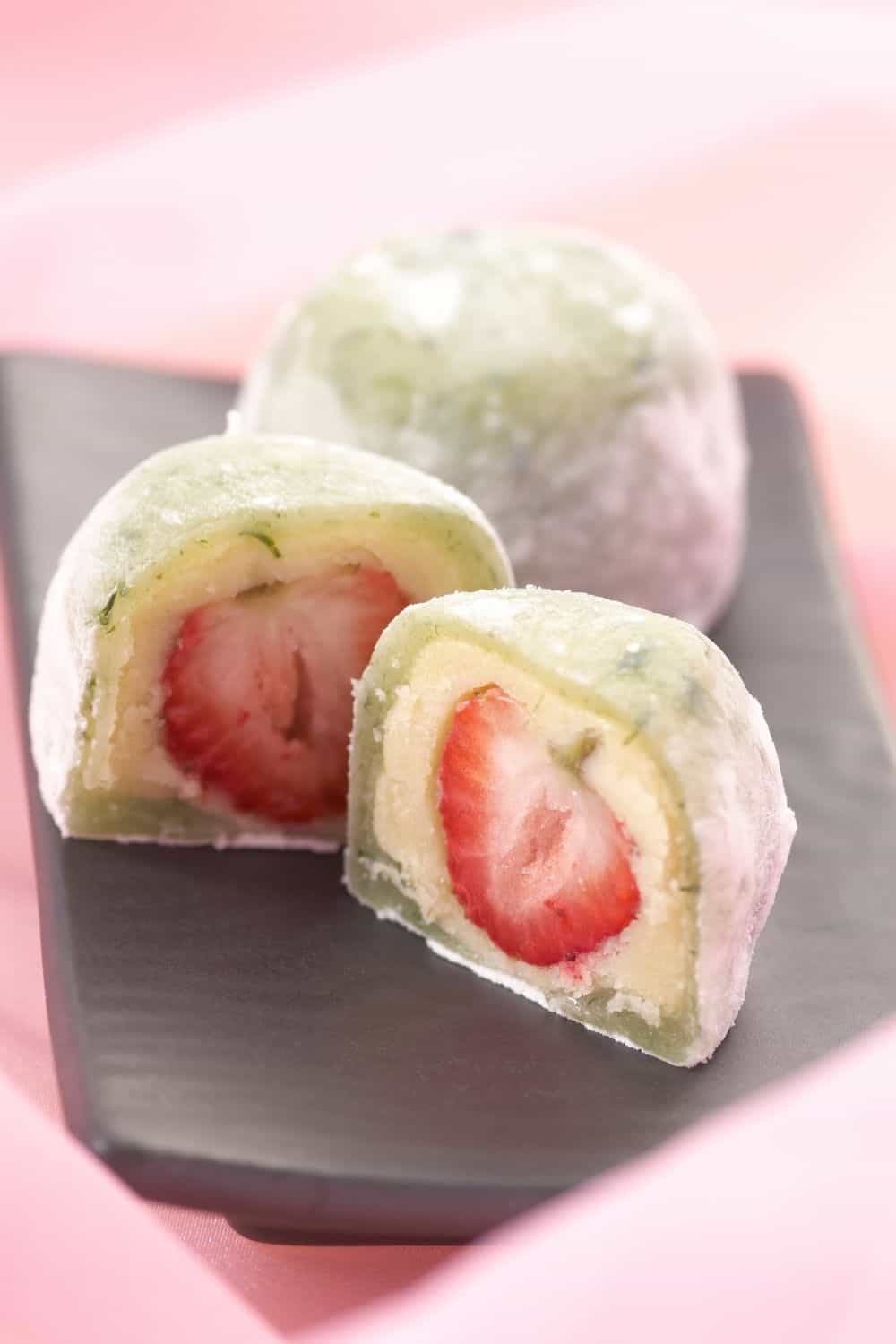
While Japan is renowned for its diverse array of daifuku varieties, one particular type stands out from the rest – Ichigo Daifuku. This unique dessert demands the use of whole strawberries as its filling, setting it apart from other traditional daifuku fillings. To create this distinctive treat, a thin layer of red bean paste is carefully coated around each strawberry, followed by a delicate wrapping of white mochi.
The resulting combination of sweet and tangy flavors, along with the contrasting textures, makes Ichigo Daifuku an unforgettable Japanese dessert experience.
Higashi
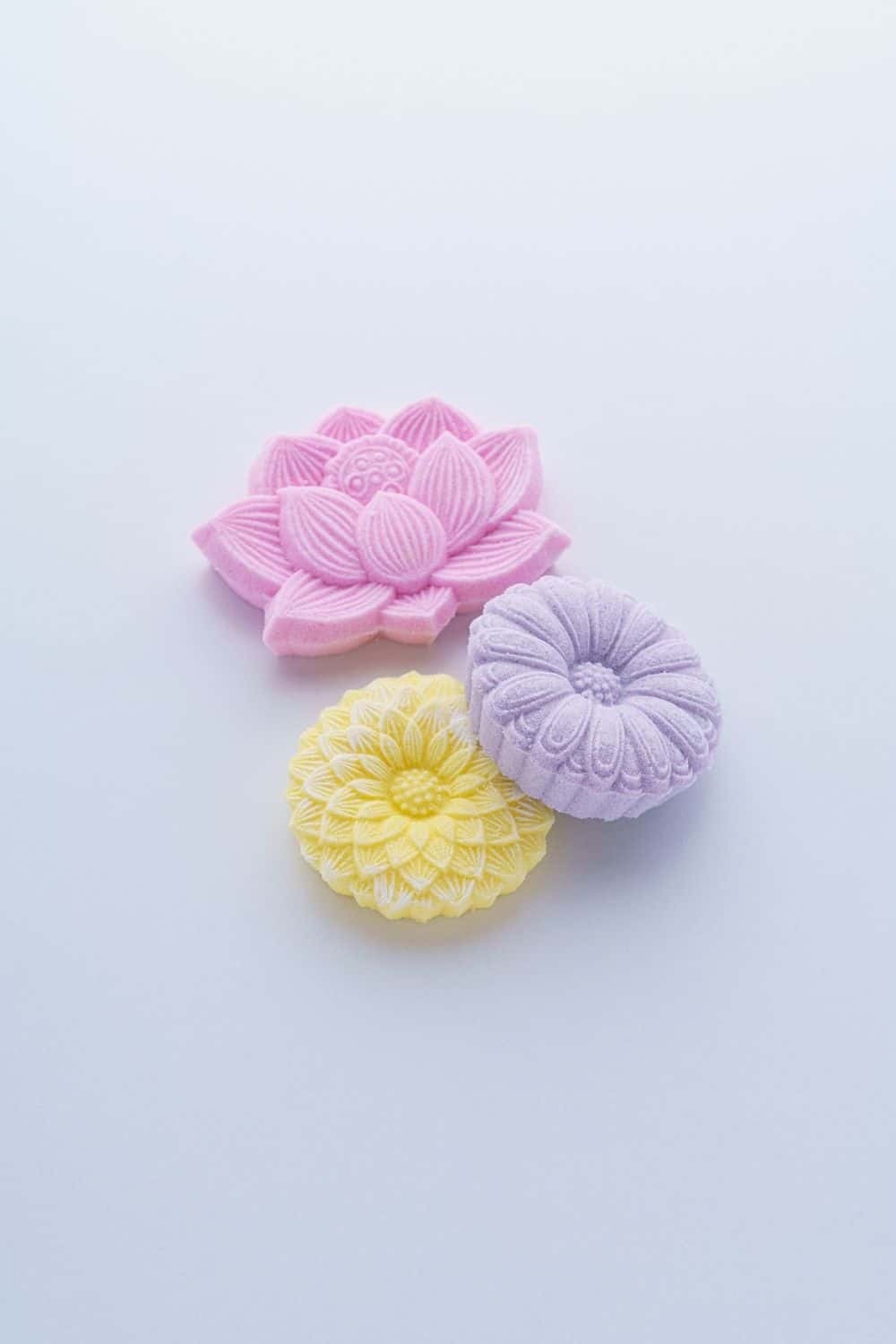
For those who indulge in the sweet world of candies, Higashi offers a delightful alternative. This dry and sugary treat is crafted using rice flour as its base ingredient. What sets Higashi apart from other confections is its versatility when it comes to shaping. By pressing the mixture into wooden molds, you can create a variety of forms that range from elegant and sophisticated to playful and whimsical.
Furthermore, Higashi often incorporates Wasanbon, a type of fine-grained Japanese sugar that adds a subtle depth of flavor with its hint of umami.
Amanattō

In Japan, Amanattō is a beloved confectionary delight that has been passed down through generations. At its core are candied beans, typically azuki or black soybeans, which undergo a labor of love to achieve the perfect level of sweetness. The process begins with boiling and soaking the beans, followed by a caramelization step that brings out their natural sugars.
Despite being more nostalgic among older generations, Amanattō’s simplicity makes it an accessible treat for people of all ages to enjoy.
Konpeito
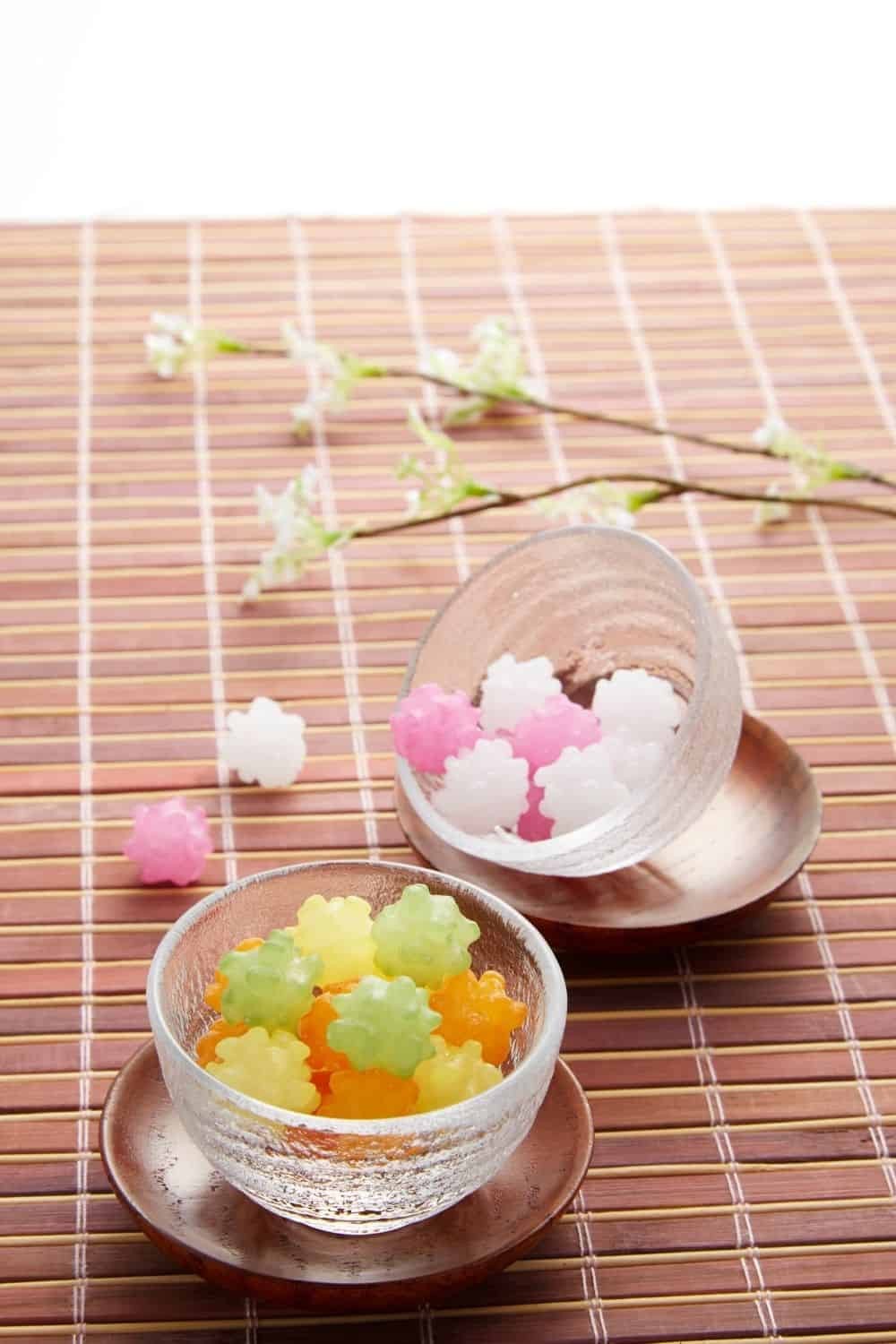
Indulge in the sweet delight of Japanese sugar candies, known as Konpeito. This crystallized treat has been a staple in Japan since its introduction by Portuguese traders in the 16th century, characterized by its distinctive star shape. While it may be tempting to indulge in a bowl of Konpeito, it’s essential to maintain a good relationship with your dentist – after all, similar to rock candy, this sweet treat is best enjoyed in moderation.
For those seeking a flavor profile that goes beyond just sugar, the option to build layers of fruit flavors offers a delightful twist. Whether you’re looking for a traditional or fruity take on this classic Japanese candy, there’s something for everyone to enjoy.
Kasutera (Castella)
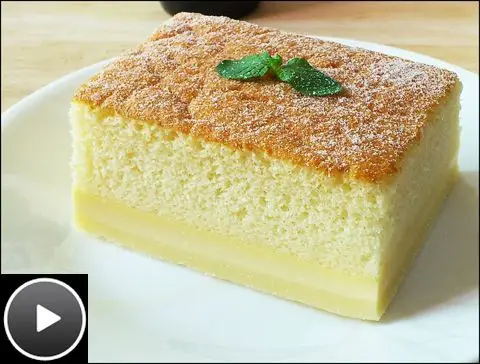
Inspired by the culinary traditions of Portuguese traders, Castella or Kasutera is a versatile recipe that yields a delightfully moist and subtly sweet sponge cake. Its adaptability to various Japanese flavors makes it a popular treat among locals and visitors alike. Some beloved variations include matcha-infused, brown sugar-enhanced, chocolate-dipped, and strawberry-tinged creations.
Okoshi
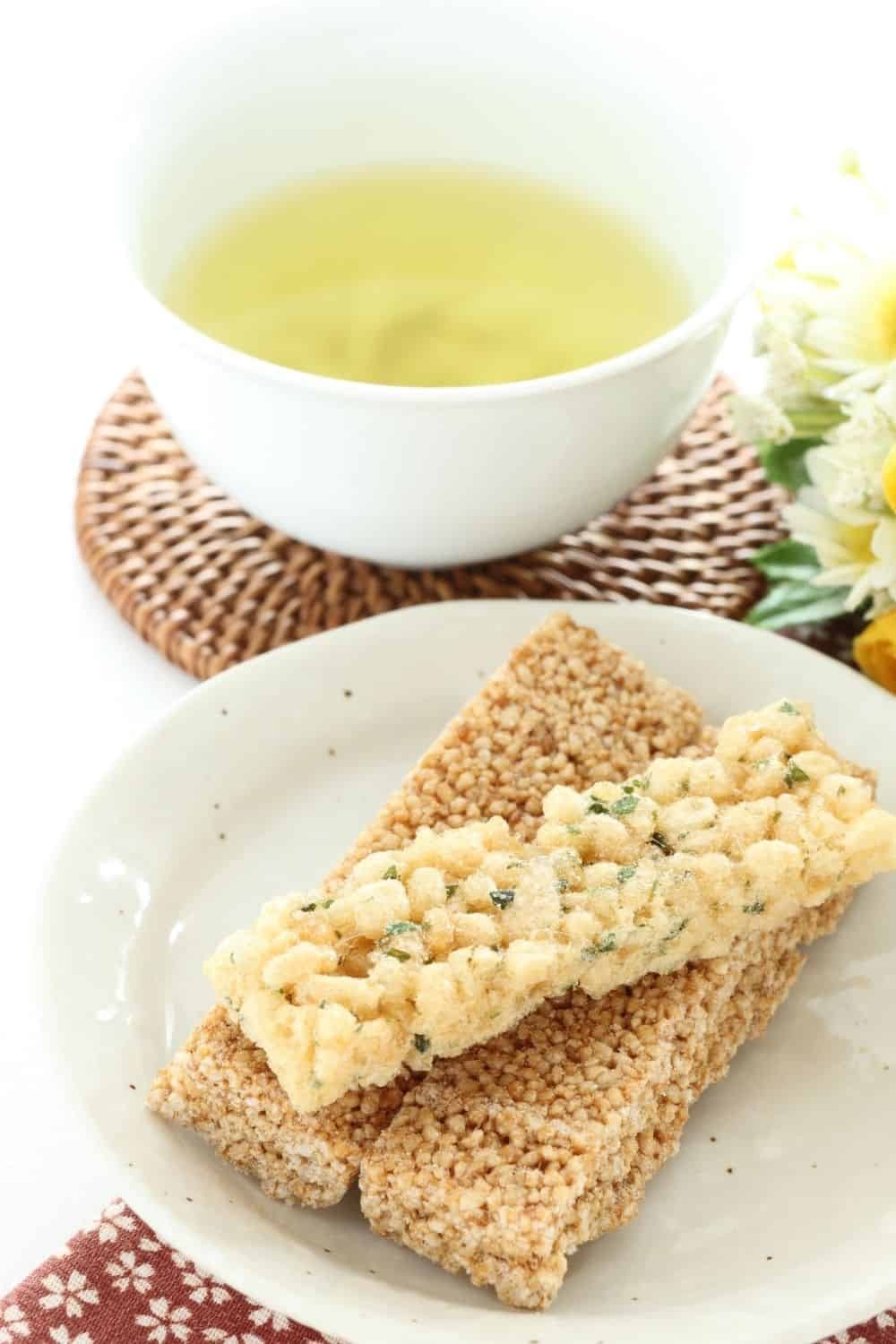
For those who delight in the chewy texture of rice crispy treats, a Japanese classic called Okoshi is sure to tantalize your taste buds. This simple yet customizable dessert is made by combining roasted rice grains with sugar, corn syrup, and shaping it into bite-sized squares.
What makes Okoshi truly special is its versatility – you can flavor it with your preferred nuts, seeds, dried fruits, chocolate, or any other mix-ins that tickle your fancy.
And if you want to take it to the next level, drizzle it with extra syrup, caramel, or whatever sweet and sticky coating catches your eye.
Ready to explore more Asian dessert options? Check out our curated list of 28 must-try treats! 🎉
The bottom line
Indulge in the delightful world of Japanese desserts! Our extensive list features 39 delectable treats, carefully curated to guide your culinary journey. Take note of the recurring flavors and stock up on the frequent ingredients to create a personalized path through this sweet adventure.
As you explore these traditional Japanese desserts, consider pairing them with a soothing cup of green tea.
Whether it’s a formal tea ceremony or an informal gathering, this harmonious combination will elevate the flavors to new heights.
We hope our list sparks inspiration for your next baking endeavor – perhaps a tried-and-true favorite that you’ll return to again and again, or a new recipe to try with friends and family. Whatever the case may be, we encourage you to get baking and savor every bite!
